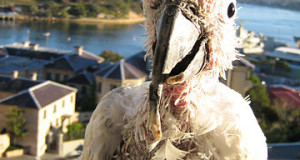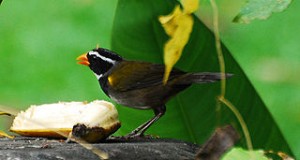 Today I’ll depart for a moment from pet birds to highlight a surprising conservation concern that recently came to my attention.
Today I’ll depart for a moment from pet birds to highlight a surprising conservation concern that recently came to my attention.
It’s easy to become complacent about California condor conservation – after all, the story of its near-extinction (only 22 survived by 1982, all in captivity) and subsequent recovery stands as one of the best-known conservation success stories. Today, approximately 150 condors are established in the wild, and I had assumed their survival to be, if not guaranteed, at least secure. Surprisingly, however, there are still gaps in the protection granted the condor under the Endangered Species Act.
It seems that cattle have unrestricted grazing rights in California’s Bitter Creek National Wildlife Refuge, an area that figures prominently in condor re-introduction efforts. The US Fish and Wildlife Service has proposed limitations upon grazing, in order to improve the habitat for condors and San Joaquin kit foxes, leopard lizards and other resident endangered species. This move is strongly contested by ranchers and many local officials, and the proposal has yet to be implemented.
I’ve worked with Andean and California condors in captivity, and have a soft spot for them. Please check the following site to learn more about specific action needed to support the preservation of their habitat: (http://www.biologicaldiversity.org/).
Image referenced from Wikipedia and originally posted by Chuck Szmurlo
 That Bird Blog – Bird Care and History for Pet Birds
That Bird Blog – Bird Care and History for Pet Birds


